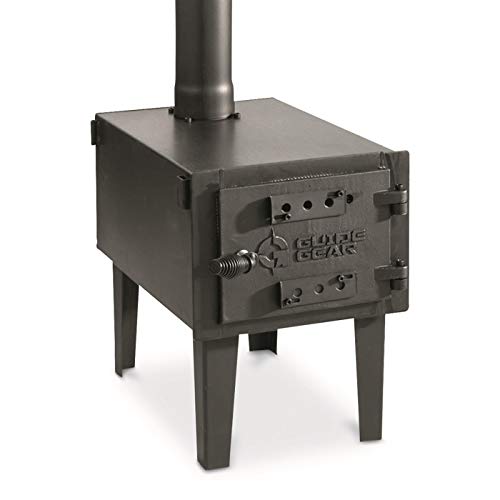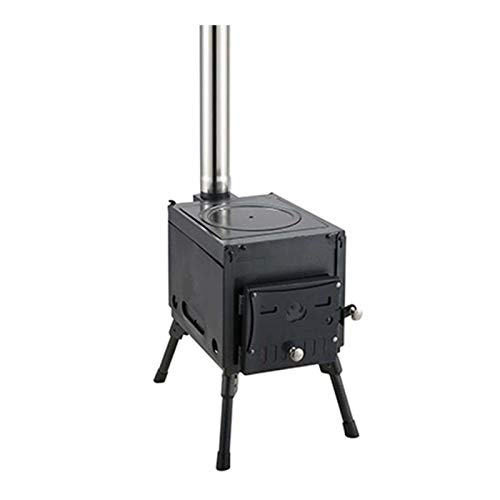20 Tips To Help You Be More Efficient With Wood Burning Stoves
페이지 정보

본문
 Wood Burning Stoves Near Me
Wood Burning Stoves Near Me Wood stoves are a beautiful, efficient way to heat your home. When buying a new stove, there are some things to consider. These include EPA-certified energy efficiency, price and maintenance requirements.
Wood stoves are a beautiful, efficient way to heat your home. When buying a new stove, there are some things to consider. These include EPA-certified energy efficiency, price and maintenance requirements.Be cautious not to get "number bound" and base your decision solely on a specific rating or BTU output. Also, consider aesthetics, suggestions from a reliable dealer, and customer feedback.
Cost
wood burner clearance sale stoves add a stylish and elegant touch to any home. They are available in a range of styles and colors that can be matched to any decor. These stoves are also efficient in energy use and are cost-effective, providing an alternative to expensive heating systems. However, there are a few things to take into consideration when purchasing a new wood stove. Included in this are the initial price as well as the installation costs and any additional costs, like chimney liners.
The price of a wood stove is contingent on the type and size you pick. You may be able to locate a freestanding wood stove priced under 700 dollars. The stove features a huge viewing glass that is kept clean with the power of airwashing. It's multi-fuel, meaning you can burn different fuels.
Noncatalytic wood stoves are more expensive than catalytic models, however they are more difficult to ignite and require more fuel to generate the same amount of heat. They also release a greater amount of particulate matter than catalytic models. Despite these drawbacks however, the noncatalytic model is an affordable option for a lot of people.
Pellet stoves are another popular alternative to wood-burning stoves. They're like wood stoves, however, they are made of smaller pellets that are made from recycled materials or wood. They are more manageable to maintain, but don't produce as much heat.
Whether you're choosing a wood or pellet stove, you'll need to factor in the cost of installing a venting system. Some wood stoves require an intake of combustion air from outside as well as a venting system that connects with the chimney. You may need to have your wood stove approved by your local building inspectors, based on where you live and the building codes that apply in your region.
Installing a wood stove into an existing fireplace will cost less. But, you'll need to install a chimney liner and might need to employ a professional to sweep the chimney on a regular basis. In addition the freestanding wood stove cannot be able to reach all rooms of a home with multiple floors, which means you will need to install radiators in other areas to supplement the heat.
Energy Efficiency
As the cost of gas and electricity continues to rise many homeowners are searching for alternative methods of heating their homes. Wood stoves offer an affordable and sustainable alternative to traditional heating systems. They also burn cleaner, reducing the amount of air pollution.
Modern wood burning stoves are incredibly efficient in terms of energy efficiency, meaning they generate more heat for your home with less fuel. This is due in part to the fact that modern wood burning stoves have smaller combustion chambers compared to older models. They also feature a catalytic combustion chamber that burns fuel more efficiently. They also produce fewer harmful emissions, which is important when you reside in an area that has to comply with the stricter standards for air quality.
Log burners are also environmentally friendly because they allow you to limit the amount of air provided to your fire. This allows it to burn at a lower temperature for longer. This reduces the amount of smoke produced by the fireplace and also prevent the accumulation of flammable creosote in your chimney.
By burning a variety of types of wood, including scrap or reclaimed wood, you can make a more balanced fuel mixture that reduces the amount of gas waste produced by the burning. You can even gather unwanted timber that has been removed from construction projects and burn it on your stove. This way you can cut down on the cost of buying firewood, and also help save our forests.
As a renewable resource wood is a carbon neutral fuel source. The trees absorb carbon dioxide during their growth, and release it when they are burned and create a sustainable cycle of life. By using local wood sources, you can also contribute to the local economy while reducing your environmental footprint.
A fireplace with wood burning can be utilized as an emergency source of heat in the event that there is a power failure. If you can keep enough logs in storage that you can to keep your home warm for several days. You can also make use of your stove to heat water and cook food.
Environmental Impact
The use of a wood stove could cause harm to the environment and your health, contingent on how well it's completed and the type of small wood burning stove you use. The burning of wood releases dangerous gases, such as carbon monoxide, nitrogen oxides, as well as fine particles, also known as PM (particulate matter). The PM in smoke is composed of a range of harmful substances that include black carbon, tar, and soot. These pollutants have been linked to a variety of health issues which include respiratory and heart diseases.
The emissions of wood burning stoves are harmful to the environment as well as health. Burning wood can also release volatile organic compounds (VOCs) which are a major source of VOCs in indoor environments. VOCs are a type of pollutant that has been linked with a range of health issues, such as headaches and eye irritation.
VOCs are created by the incomplete combustion of wood. They can harm the lungs, respiratory tract and circulatory system. They also contribute to a variety of other environmental issues, including the loss of biodiversity, water quality, and soil erosion. In certain areas the concentrations of VOCs in wood smoke may exceed federally-enforceable standards.
According to a report published by Undark, five states have offered incentives to replace old wood-burning stoves by EPA-certified models. However, many of these appliances are only marginally better than older models. They are also expensive and require electricity to operate fans, controls, and pellet feeders.
Therefore, some environmental agencies have begun to abandon incentives to encourage the purchase of new wood stoves, in favor of encouraging people to switch over to other sources of heat. The State of Oregon, for example requires homeowners to take down wood-burning stoves that are not certified and encourages them to heat pumps.
Wood stoves are more efficient in energy use than other heating methods, such as gas or electric furnaces. They produce more heat with less wood than their electric or gas counterparts, making them a cost-effective and sustainable option for home heating. They should be maintained and checked regularly to cut down on fuel usage and improve efficiency. By removing the feed system and hoppers at the end season, you can prevent rust from forming and ensure that the stove is ready to be used in the fall. In addition regular cleaning of the stove's flue vent will prevent flammable creosote buildup.
Safety
Wood burning stoves are an excellent alternative to heat, but they can be risky for the safety of your family. Smoke inhalation is a risk for fires, carbon monoxide poisoning, and other serious problems. You can safeguard your home and family members by taking the appropriate safety precautions.
Make sure that your stove is properly installed and venting. A certified professional should put in your chimney, flue pipe, and the connectors. The chimney should be at least three feet higher than any objects that could ignite. This includes trees that are overhanging or buildings that are adjacent. Install carbon monoxide and smoke (CO) detectors in every bedroom and on every level of the house and connect them so they all sound when one is activated. Make sure to check your alarms frequently and replace batteries. Keep combustibles, like paper, garbage plastics, plastics, and other materials, away from your stove and don't ignite them in the vicinity of it.
Never leave a wood-burning stove unattended, particularly at night. If you have a wood-burning stove located in the bedroom, turn off the heat and open the windows before going to go to bed. This will stop smoke from the wood stove from entering the room and cause CO poisoning.
Install an air-cleaning device if you plan to use wood stove. These systems neutralize and remove volatile organic compounds in the exhaust air stream before it exits the fireplace. You should also keep your stove clean, and keep the draft louvers free of ash and debris.
Wood smoke is harmful for everyone but is especially harmful for children and older adults who have weakened lung capacity. It can also trigger respiratory illnesses and asthma. If you can, stay away from wood-burning stoves on days with high levels of pollution. The EPA and states offer daily reports on air quality.
The latest wood stoves might be more efficient than older models, but they still release large amounts of pollutants into the air. Select a stove that has been endorsed by the EPA as being over 72 percent efficient, to reduce the amount of pollution you are exposed to. Burn only dry, seasoned wood. This type of wood produces less toxins and produces more energy than fresh, green wood.
- 이전글Under Counter Larder Fridge Tools To Ease Your Everyday Lifethe Only Under Counter Larder Fridge Trick That Everyone Should Learn 24.01.26
- 다음글Rolls Royce Phantom Key: The Ugly Real Truth Of Rolls Royce Phantom Key 24.01.26
댓글목록
등록된 댓글이 없습니다.
